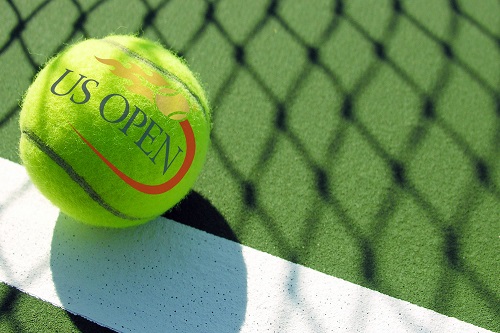By
Bikash Mohapatra
The US Open, now synonymous with hard courts, was once played on clay. The authorities, in a bid to make the tournament television friendly, experimented by holding the tennis tournament on a green clay surface in Forest Hills, New York, between 1975 and 1977.
The hard courts of USTA National Tennis Center in New York is what the US Open has become synonymous with over the last many years. However, it wasn’t always the case.
Unlike the French Open and Wimbledon, which have traditionally been played on the same surfaces throughout – clay in the case of the former and grass in the latter, the year’s final Grand Slam tournament has witnessed quite a few changes of surfaces.
Having started out on the grass courts of Newport Casino (Rhode Island) in 1881, the tournament is now being played on the hard courts of Flushing Meadows.
While the transition to a hard surface occurred in 1978, it is a relatively lesser known fact that in the three preceding years – before it was moved from Forest Hills to Flushing Meadows, the tournament was played on clay courts.
In fact in those three years there were two major tournaments each on clay and grass, considering the Australian Open back then was played on the grass courts of Kooyong.
Coming back to the US Open…it was never about tradition, a la Wimbledon. A change, therefore, always seemed a possibility.
The authorities, in a bid to make the tournament television friendly, experimented by holding the tournament on a green clay* surface in Forest Hills between 1975 and 1977, the same venue where the tournament was held on grass for many preceding years.
The US Open thereby remains the lone major tournament to be played on three surfaces.
Evert won on each of those three years
Traditionally, the Americans haven’t been too comfortable playing on clay. But in the three years that the US Open was played on the surface, they did quite well.
The fact that the green clay is faster than the red clay of Europe worked to their advantage.
Already a two-time champion at the French Open, Chris Evert won the first of her six US Open titles in 1975.
In fact, she won the event in each of the three years it was played on clay – besting Australian Evonne Goolagong Cawley in the finals in 1975 and 1976, and getting the better of another Aussie, Wendy Turnbull, in the decider in 1977, as well as the first year it was played on hard court (1978) – easing past compatriot Pam Shriver.
Evert remains, and will always remain, the only woman to win the tournament on two surfaces.
Connors won on all the three surfaces
Clay wasn’t Jimmy Connors‘ favorite surface by any stretch of imagination. In fact, at the peak of his career the American frequently chose to skip the French Open.
However, that didn’t mean that he could not play on clay. Connors won 12 career titles on clay and made the semi-finals at Roland Garros on four occasions.
However, he reserved his best for the US Open. In the 1976 final, Connors beat arch-rival and reigning French Open champion Björn Borg in four sets for his lone clay court major. (The Swede, a six-time French Open winner, never won the US Open, 1976 being his best chance).
The American reached the final in all the three years it was played on clay.
Connors will remain the only player to have won the US Open on all three surfaces – grass (1974), clay (1976) and hard (1978, 82–83).
Vilas followed up on his French Open success…
Guillermo Vilas is generally considered one of the best clay court players of all-time. However, it was to the Argentine’s detriment that his career coincided with that of Bjorn Borg.
Vilas, despite his dominance on the slow surface, could win the coveted French Open title just once (1977) in his career, finishing second best to the Swede on two occasions.
However, he did win a second major title on clay, a four-set win over defending champion Jimmy Connors helped the Argentine win his lone US Open title in 1977, a year in which he dominated the sport (winning 15 titles).
In fact, Vilas’s US Open triumph served as a perfect follow up to his French Open win.
Orantes’ failure to win the French was compensated
Like many Spaniards, Manuel Orantes was a clay court exponent. He won every major title on the surface, save the biggest of them all (the French Open).
Orantes made it to the final just once at Roland Garros, in 1974. He took a two-set lead before completely blowing away his chance, allowing Bjorn Borg to win in five.
Orantes however did win a major title on his favorite surface.
In the first year that the US Open was held on clay (1975), the Spaniard thrashed defending champion Jimmy Connors in straight sets to capture what remained the lone major title of an otherwise illustrious career.
*Green clay – a surface developed in the early 1930s by a Charlottesville-based company HarTru – is actually crushed igneous basalt, its dark grayish-green color coming from the mineral epidote, which occurs naturally in the stone. It is rarely used these days.
Bikash Mohapatra
A firm believer in the adage ‘variety is the spice of life’, New Delhi-based Bikash Mohapatra has been a human resource manager, a communication specialist, a strategist, a media professional and a researcher/writer at various stages of his career, acquiring a new set of skills with every additional responsibility.
Outside of work he is an avid traveler, with an innate desire to learn about various people, places and cultures. It is this ‘travel education’, coupled with varied ‘professional experience’ that manifest into thoughts and take the shape of detailed and elaborate narratives.



No Comments Yet!
You can be first to comment this post!